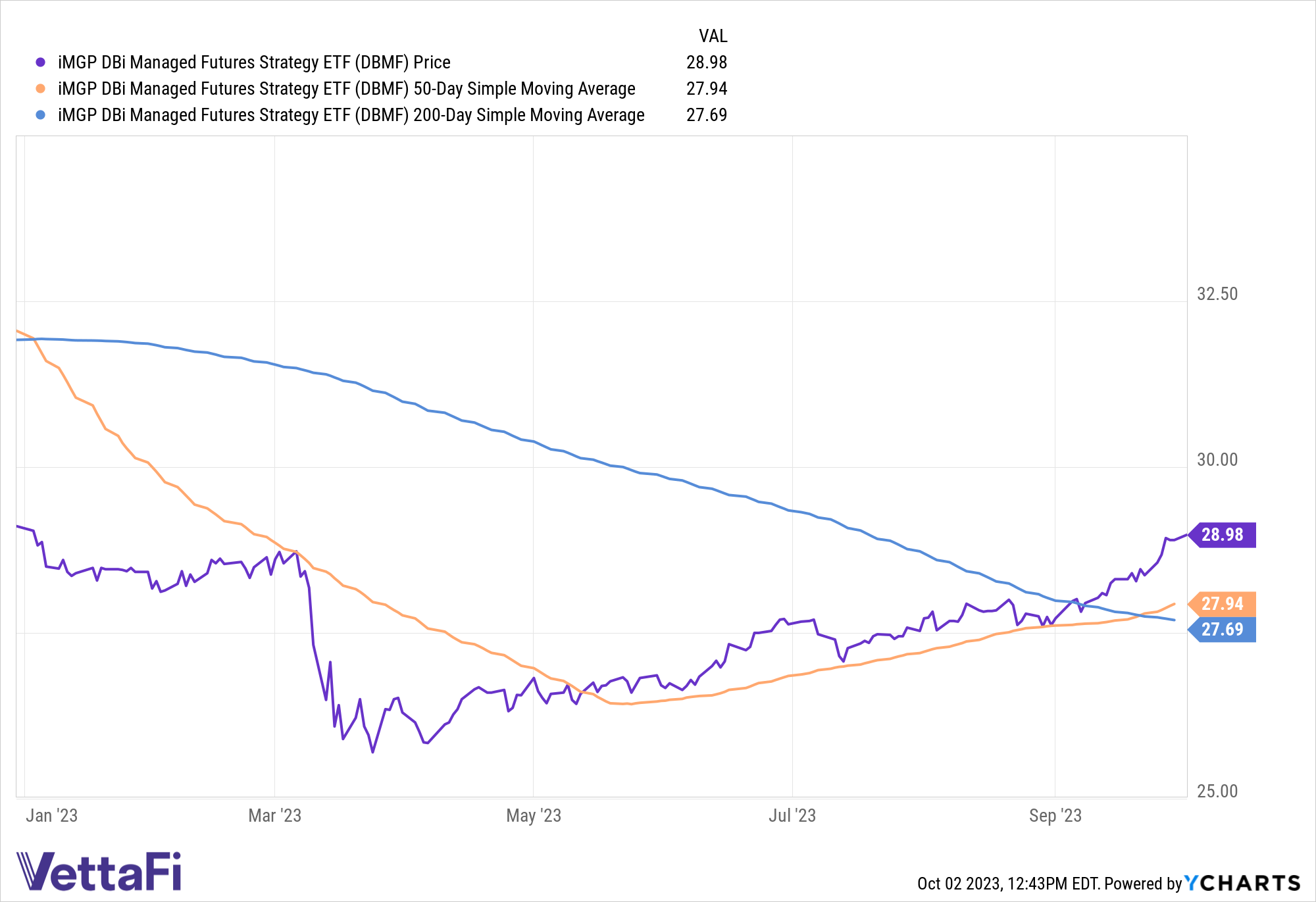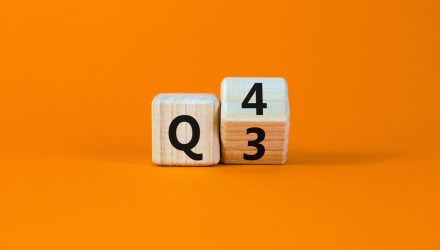The trend-following megastar of 2022 is at it again heading into the fourth quarter. The iMGP DBi Managed Futures Strategy ETF (DBMF) posted strong third-quarter gains when equities and bonds both fell, and is trending in strong buy territory.
DBMF generated significant performance last year when equities and bonds both fell. Though it faced challenges in the first quarter this year, the fund continues to make strong gains. This performance is particularly noteworthy in the third quarter, when equities and bonds both dropped.

DBMF crossed above its 50-day simple moving average mid-May, where it has remained ever since. The ETF recently crossed above its 200-day SMA on September 8. Those funds trending above both 50- and 200-day SMAs are considered strong buys for investors.
What’s more, DMBF is down just 0.65% year to date as of 10/02/23, after having dropped as low as -11.71% in March in the wake of regional bank collapses.
Equity tides began to shift in the third quarter as the labor market remained resilient and consumer spending stayed relatively elevated. Despite continued aggressive Fed interest rate hikes, inflation proved persistent. News of higher rates for longer after the September FOMC meeting and dropping consumer confidence reflected the uncertainty and challenges of the path ahead.
In such a complex market environment, the SPDR S&P 500 ETF Trust (SPY) fell 3.56% in the third quarter, while DBMF rose 4.60%. The iShares Core US Aggregate Bond ETF (AGG) dropped 3.99% in the same period.
In an ever-changing, challenging environment, portfolio diversifiers matter. DBMF continues to prove its worth as equities and bonds begin to move in tandem once more.
DBMF a Strong Buy, Long-Term Hold
The iMGP DBi Managed Futures Strategy ETF (DBMF) is actively managed, and uses long and short positions within futures contracts primarily, as well as forward contracts. These contracts span domestic equities, fixed income, currencies, and commodities (via its Cayman Islands subsidiary). Because the strategy transacts in futures, it offers a low to negative correlation to stocks and bonds.
With most traditional portfolios positioned for the noncorrelation of equities and bonds, the coming years could prove particularly challenging. Given that equities and bonds have and continue to move in tandem more often than not in the last 18 months, the long-term addition of portfolio diversifiers like managed futures makes sense.
See also: “Mind the Macro: The Decade of Portfolio Diversification”
The Dynamic Beta Engine determines the position that the fund takes within domestically managed futures and forward contracts. This proprietary, quantitative model attempts to ascertain how the largest commodity-trading advisor hedge funds have their allocations. It does so by analyzing the trailing 60-day performance of CTA hedge funds and then determining a portfolio of liquid contracts that would mimic the average of the hedge funds’ performance (not the positions).
By offering the hedge fund strategy in an ETF wrapper, DBMF can generate “fee alpha” through significant savings in fees compared to a 2/20 hedge-fund fee structure.
DBMF has a management fee of 0.85%.
For more news, information, and analysis, visit the Managed Futures Channel.

